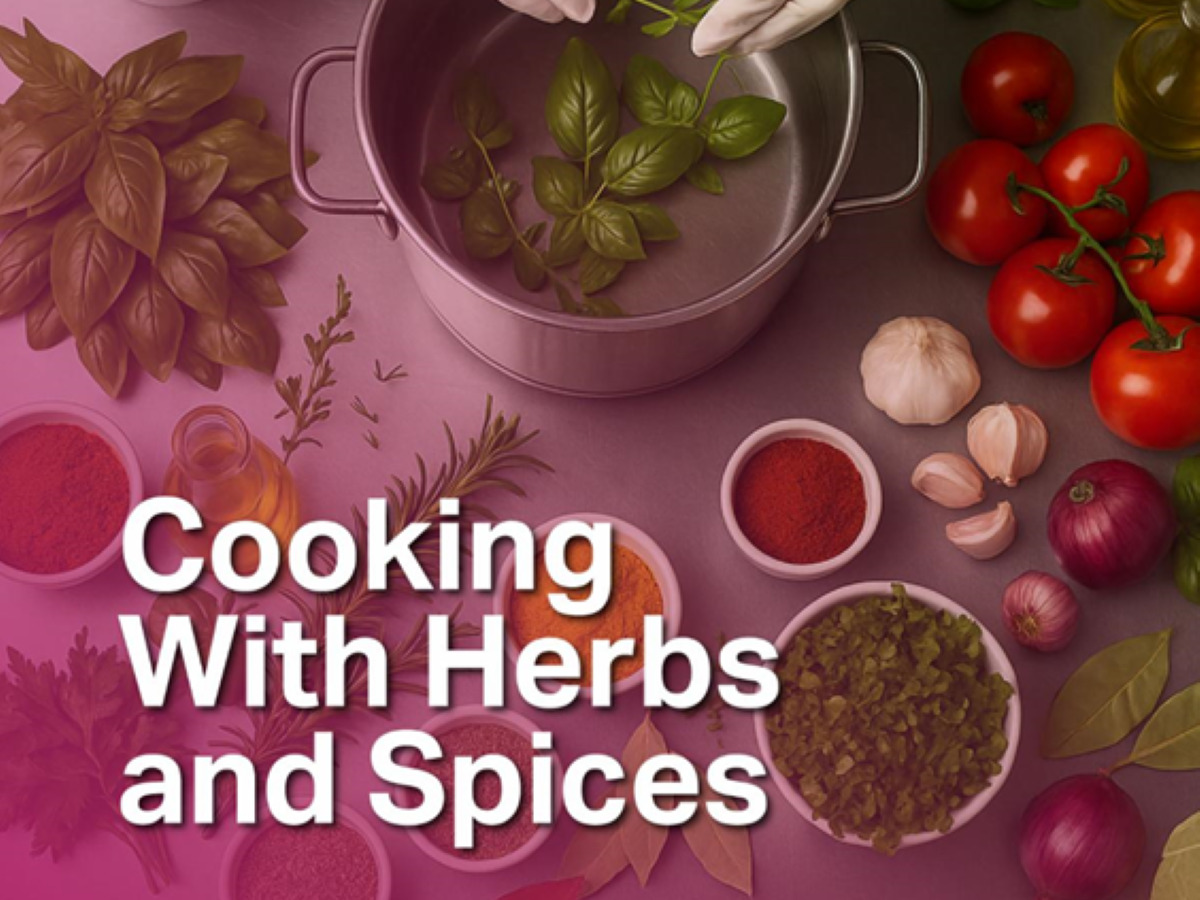Cooking with Herbs and Spices
Institute of Child Nutrition (ICN)
June 4, 2025

Incorporating herbs and spices into recipes enhances flavor, aroma, and color while reducing the need for excess salt, sugar, and fat. Our partners at the Institute of Child Nutrition define herbs and spices, reviews the health benefits of using fresh or dried herbs and spices, and provides ideas for incorporating them into recipes.
What are Herbs and Spices?
Herbs, the leaves of herbaceous (non-woody) plants, are a versatile addition to any dish. With their pleasant and distinctive smell, they can be used to flavor food, create medicinal remedies, or even craft perfumes.
- Examples: basil, mint, oregano, parsley, rosemary, sage, thyme
Spices are made from the bark, buds, fruit, roots, seeds, or stems of various plants or trees that have been dried and crushed. They have a strong taste and are used to flavor food.
- Examples: cinnamon (bark), cumin (seed), cloves (flower bud), ginger (root), nutmeg (seed), vanilla (undeveloped fruit of an orchid)
Fresh Versus Dried Herbs and Spices
- Dried herbs and spices are more concentrated in flavor, so you need a smaller amount to achieve the same flavor as fresh herbs and spices.
- Add dried herbs and spices earlier in the cooking process to allow their flavors to fully infuse into the dish, also known as “blooming” your spices.
- Add fresh herbs and spices toward the end of the cooking process to preserve their flavor and aroma.
- To substitute dried herbs for fresh ones in a recipe, use the correct ratio from the CICN Culinary Quick Bites: Developing Flavor conversion chart.
Nutritional Benefits of Herbs and Spices
Herbs and spices are rich in vitamins and antioxidants that offer health benefits, such as reducing inflammation, blood pressure, cholesterol, and the risk of chronic diseases like certain cancers. Examples include clove, rosemary, oregano, cinnamon, turmeric, and garlic. Incorporating them into recipes enhances flavor while reducing the need for excess salt.
High sodium diets are linked to increased risks of high blood pressure, heart attacks, strokes, and kidney disease, affecting both adults and children. Using herbs and spices instead of salt can help lower sodium intake and improve health.
Seasonings and Spice Blends
Many people buy high-sodium seasonings, like garlic or onion salt, and taco or chili seasoning packets to flavor foods. Consider the ideas below to help reduce sodium:
- Replace garlic salt with chopped garlic, granulated garlic, or garlic powder.
- Replace onion salt with fresh or frozen chopped onions, onion powder, or dried onions.
- Purchase spices and herbs with no added salt, or make your spice blends*.
Incorporating Herbs and Spices into Menus
Herb and spice blends are a fantastic way to add variety to your menu. Use the following ideas to enhance flavor in your menus:
- Spice up unseasoned baked potato wedges with scratch prepared ranch or Cajun spice blends.
- Use a mixture of cut vegetables, herbs, and spices to flavor soups, stews, and other dishes.
- Mix fresh chopped herbs with cooked grains or vegetables to add color, flavor, and texture. Adding minced parsley, for example, creates a fresh flavor.
- Use a blend of fresh or dried herbs in marinades or rubs to enhance the taste of grilled or roasted meats.
For even more information, check out ICN’s June Mealtime Memo on Legumes.
